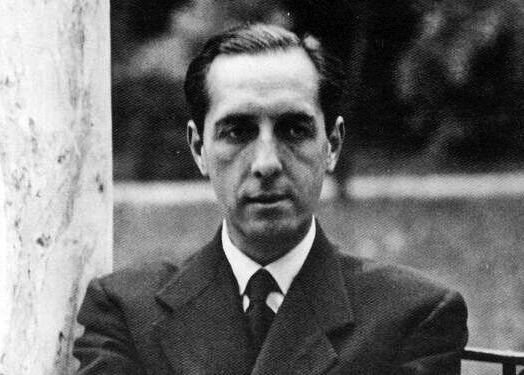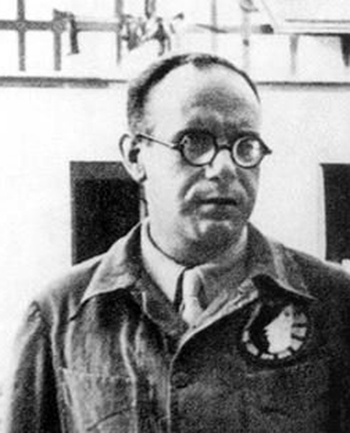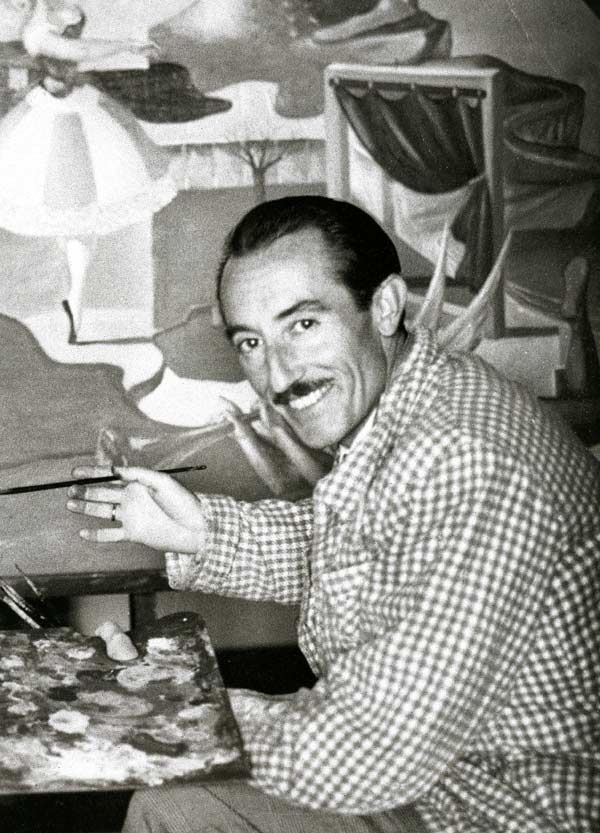Scenographer, illustrator, playwright, actor and film director, he was born in Santander in 1903. He belonged to the Generation of ’27 and was very active, mainly in the field of theater, with personalities such as Federico García Lorca (in success and failure), Margarita Xirgu, Pepín Bello, Rafael Alberti, María Teresa León, Concha Méndez, Pablo Neruda, Vicente Huidobro and Manuel Fontanals, among others. He also participated in the premiere of plays by playwrights such as Enrique Jardiel Poncela and Alejandro Casona. During the Civil War he was part of María Teresa León’s “guerrilla” theater groups that traveled the front lines and staged plays of political agitation and versions of classics. He lived in exile in Chile and Uruguay. In the fifties he returned to Madrid and resumed his film career, now as a performer in films directed, among others, by Sáenz de Heredia, Fernán Gómez and Pedro Lazaga. He is considered one of the great masters of scenography and costume design. He died in Madrid, ill and alone, on August 26, 1989.
Ontañón arrived in Madrid, from his native Santander, and as a boy he frequented the tertulias at the Granja del Henar and El Pombo cafés. One of his first theatrical collaborations was in the noisy premiere of The Butterfly’s Evil Spell, García Lorca’s theatrical debut at the Eslava Theater in Madrid in 1920 with Catalina Bárcena and Gregorio Martínez Sierra. “The premiere was disastrous,” recalls Ontañón. “It was one of the Madrid premieres in which the ceilings were coming down from the stamping.”
Staying with García Lorca in the summer of 1928 at the Residencia de Estudiantes they read in a copy of ‘Abc’ the news about the crime of Níjar that was transformed in 1933 in ‘Blood Wedding’, for whose premiere he elaborated the scenography commissioned by Federico himself.
Shortly after he moved to Paris, where he designed and built his first set for a Russian ballet company, and collaborated as an illustrator for Revista de Occidente and La Esfera. In 1927, he resumed his career as a set designer in Madrid, in this case for the lyric theater.

Being with García Lorca in the summer of 1928 at the Residencia de Estudiantes (Students’ Residence) they read in a copy of Abc the news about the crime of Nijar that was transformed in 1933 in Blood Wedding, for whose premiere he elaborated the scenography by order of Federico himself. After the proclamation of the Second Republic, he joined La Barraca for whom he created the sets for The Land of Alvargonzález, by Antonio Machado, and the drawings for the explanatory booklet, edited by Manuel Altolaguirre, which was distributed to the public before the performances.
He attended the theater without forgetting his other passion, cinema. In 1935, he directed his first film, The Carnations, based on a zarzuela of the same name. When the military uprising of 1936 took place, Ontañón was preparing the film version of The Fir of the Discreet by Baroja. María Teresa León requested him as set designer for Guerrillas of the Center’s Army Theater. In 1937, he prepared the set designs for the posthumous premiere of The Billy-Club Puppets at the Zarzuela Theater, as well as for Rafael Alberti’s adaptation of Numantia by Cervantes in which the Romans appeared in Fascist uniforms.
In October 1939, once the war was over, a group of Republicans, which included Ontañón, requested asylum in the Chilean Embassy in Madrid where Lorca’s great friend, Carlos Morla Lynch, was in charge of business. If, during the war, the embassy had welcomed Franco supporters and aristocrats who feared for their lives in Republican Madrid, when the conflict ended it opened to refugees from the losing side. In those endless confinements, the idea came about to edit first a newspaper, El Cometa, and then La luna, a magazine of artistic creation with strong political content for which Ontañon illustrated and wrote in all the issues.
Thanks to the diplomatic efforts, the last thirteen people received in the embassy went into exile in Santiago de Chile, a city where other republicans, among them Margarita Xirgu, were already living. Ontañón was one of those who convinced Xirgu to return to the theater and found the School of Dramatic Art.

From Chile, in 1943 he went to Uruguay where he continued his work as a set designer. In a few days he prepared the version of Mariana Pineda that Xirgu premiered in Montevideo. “The final moments of the play were delirious,” Ontañón recalls. “All I know is that the theater was falling apart.” The Lady of the Dawn by Casona and The Eyesore by Alberti were other plays staged by both, although the one that was recorded for history was that of The House of Bernarda Alba on March 8, 1945 at the Avenida Theater in Buenos Aires, based on the text Lorca worked on at the Rosales family home in August 1936, shortly before his assassination.
In the 1950s, he returned to Spain and, in order to survive, continued his career as a film actor. He worked in numerous films such as Children’s Games, Faustina. Life Ahead, Miss Cuplé, For Men Only, Tombola or The Hangman. In the latter he played Corcuera, a Franco supporter who preached the goodness of the garrotte death penalty.
In the late eighties illness affected his activity, he published his memoirs A Few True Friends in 1988 and died the following year.



